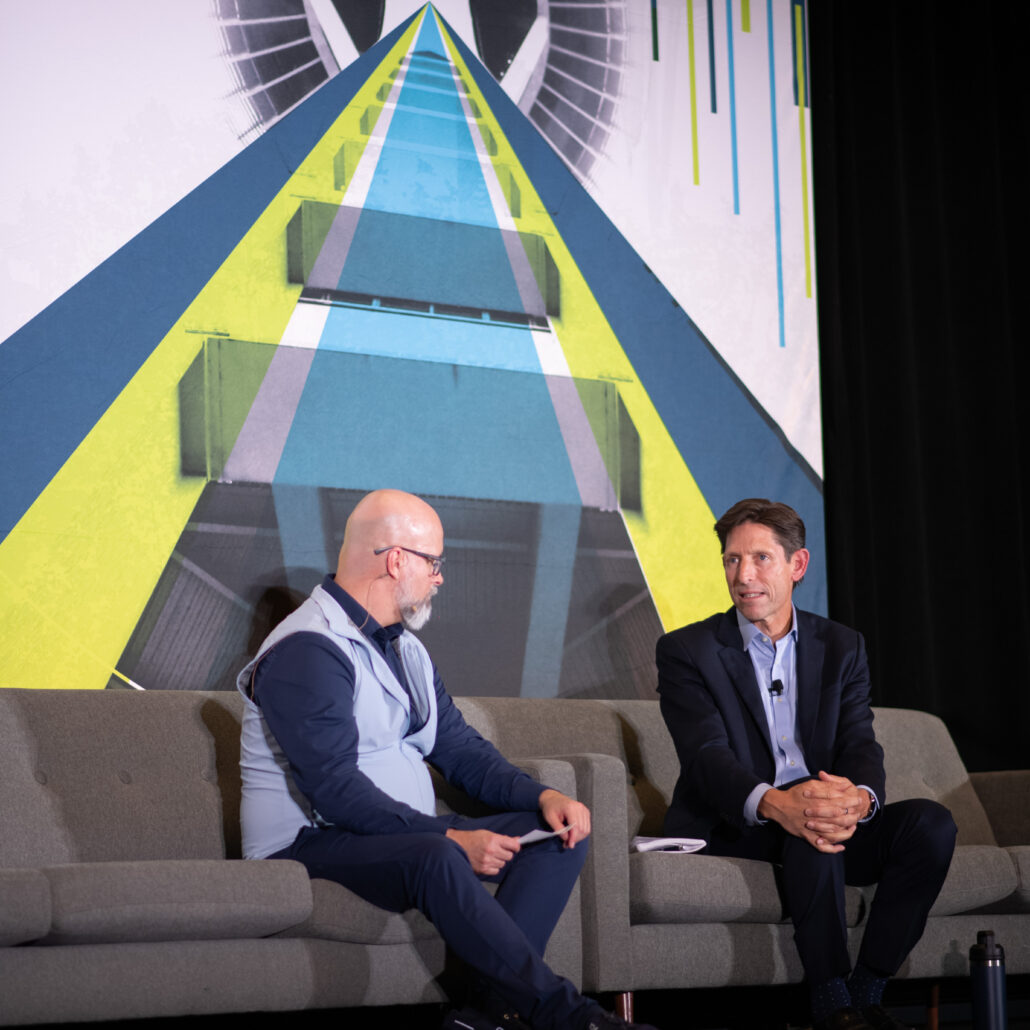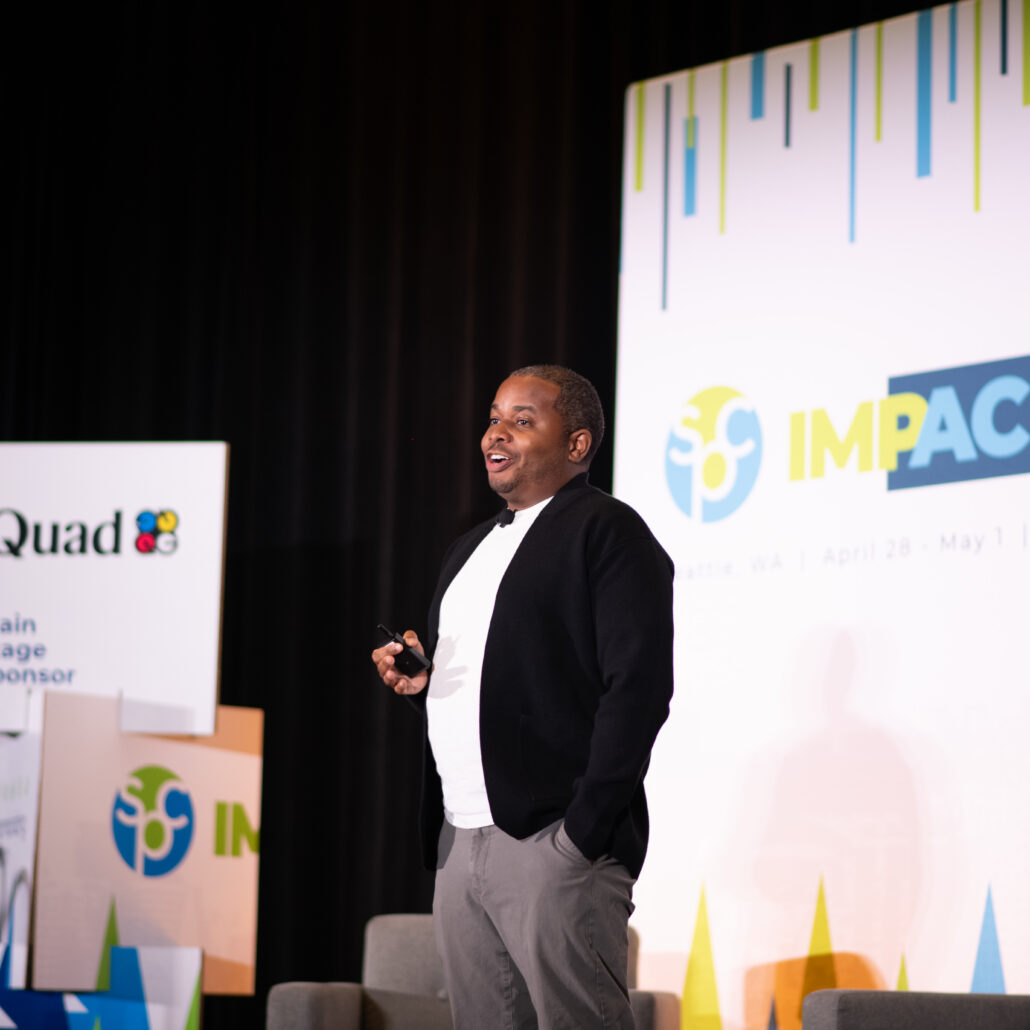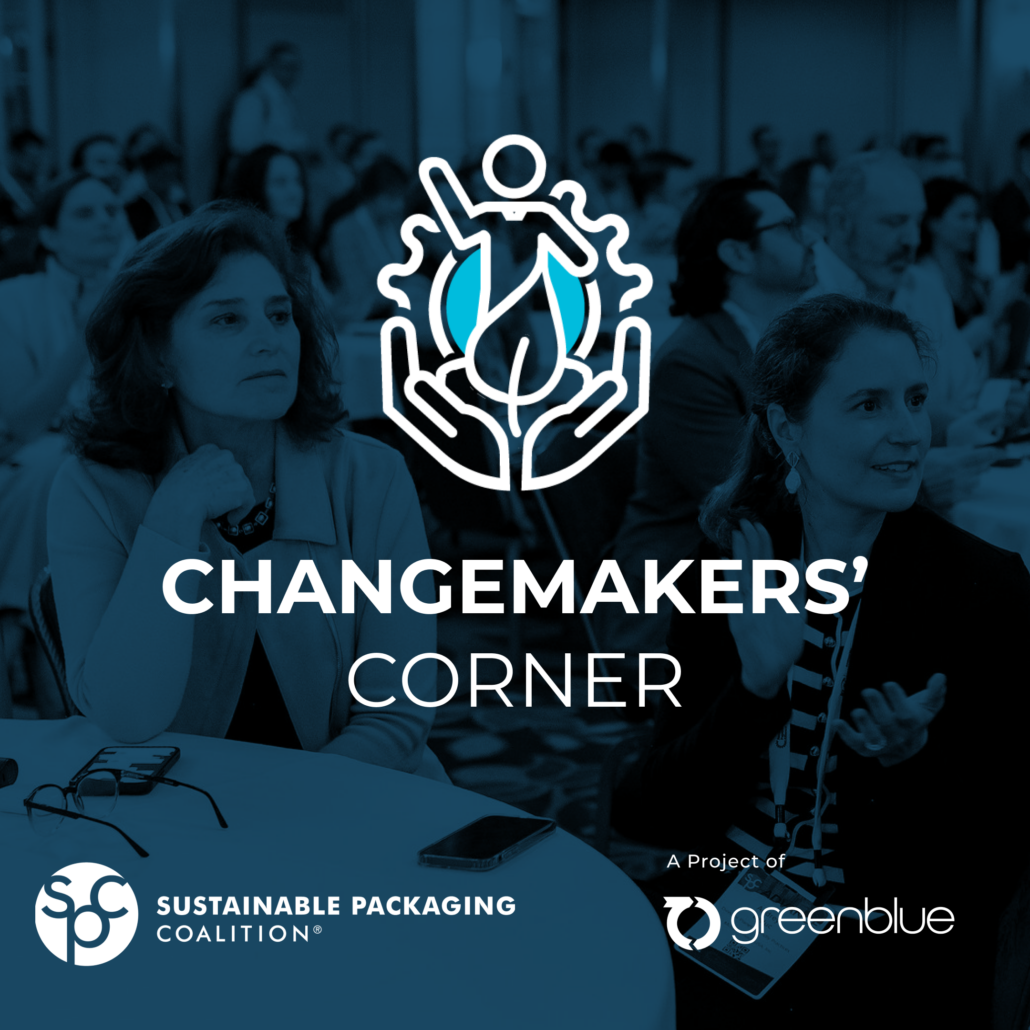At SPC Impact 2025, one theme rang loud and clear: harmonization is no longer optional — it’s essential. From EPR compliance to material recovery and consumer engagement, aligning our strategies across states, sectors, and stakeholders is the only way forward.
Let’s dive into four key takeaways from sustainable packaging’s premier event.
—
1. “The Show Has Started”: Navigating Packaging EPR

EPR really does start this July. Throughout SPC Impact, members of the Circular Action Alliance (CAA) team, the nation’s premier Producer Responsibility Organization, presented in sessions to help SPC members prepare for the rollout of Extended Producer Responsibility (EPR) legislation. We got into the weeds: Why CAA extended Oregon’s reporting deadline and what class of bonus producers get from switching to reusable packaging. But we didn’t lose sight of the big picture: With EPR, CAA President Jeff Fielkow said, “We have a chance to be collaborative and change the narrative on how education and outreach work to solve the reasons why composting and recycling aren’t working.”
Data will determine your path forward. During a session on the data producers will need for EPR compliance, Reverse Logistics Group’s Rebecca Schwartz Altholz shared three must-dos when it comes to data collection:
- Identify your obligations: Understand where you fall in the ‘producer hierarchy’ of different EPR programs
- Identify covered products: Determine whether and where the packaging and products you produce are covered by different EPR programs – and account for everything as basic as format to adhesives and biodegradability.
- Collect your sales data: Sales data is a critical piece of the formula for what producers will owe under EPR. During SPC Impact, Rebecca shared that formula with us:
(Packaging Data x Sales) x EPR Fee Schedule = Total Owed
Building internal alignment and external consistency is essential. Figuring out one company’s EPR compliance is a job in and of itself. Figuring out our industry’s approach to making compliance consistent across states is what we’re here for. During SPC Impact, we brought together brands, retailers, policymakers, and more to align on reporting, share strategies, and explore insights from the first U.S. packaging EPR programs. What did we learn? We’ll need to assemble teams — involve our lawyers, finance, and risk experts — who are prepared to complete reporting “again and again.” We need to create reporting systems that we can repeat across states and EPR programs.
—
2. Where Do We Go From Here?: The Future of Sustainable Packaging

In the middle of the ‘decisive decade’ with packaging policies moving at a breakneck pace, even experts are wondering: Where does our industry go from here?
In the 2025 Sustainable Packaging Trends Report, SPC outlined four trends that should be part of packaging professionals’ plans. As states redefine recyclability and continue to adopt EPR legislation, companies can stand to learn from four distinct trends in sustainable packaging:
- Using reuse across best-fit categories
- Adapting to new policies regulating material health
- Aligning material choices with your sustainability goals
- Filling collection gaps for hard-to-recycle materials
Learn more in the full report.
We dove into the potential of paper packaging. As companies set material-specific packaging goals that favor paper, we explored the current pitfalls and potential of the material. During a session with experts from Billerud, PaperWorks, and Progressive Converting, we heard about one major holdup: plastics and additives in barrier packaging that reduce recyclability. To address this and meet the growing demand for the ‘paperization’ of everything, the industry will need to harmonize its approach to bio-based coatings and to scale this approach through industry and brand collaboration.
We saw what the packaging world could look like in 2050. During SPC Impact, Aura’s Gillian Garside-Wight took us 25 years into the future — not with predictions, but with four powerful potential scenarios that the sustainable packaging industry can prepare for:
- The Tough Scenario: A world rocked by climate breakdown and geopolitical instability.
- Accelerated Scenario: An evolutionary path where today’s trends extend forward.
- Recovering the Past: A world with pushback against tech, with consumers seeking simplicity and authenticity.
- A High-Tech Future: Where AI and automation fully reshape consumer behavior and packaging needs.
—
3. More Data and More Dollars: Improving Material Recovery

Improving recovery requires more than just better systems — it needs better data and more investment. As Recycle Coach’s Jeff Galad put it: “The data tells us we need more data.” But we also need more dollars.
That message echoed throughout SPC Impact as speakers explored flexible packaging recovery, end market gaps, and new solutions to age-old recycling challenges.
We learned about the hard truths of flexible packaging recovery. What would it take to see that flexible packaging recovered in curbside recycling? Navigate’s Nina Goodrich and Susan Robinson shared research on the barriers to curbside recycling for flexibles, showing us that:
- Building up a curbside system for flexibles in the U.S. will take a long time
- The economic gap is too large to rely on voluntary commitments to solve the challenges of recycling flexible film packaging
- End markets need substantial support in order to develop further
What can our industry do? Support end market development, educate policymakers, and create solutions that mitigate the economic gap between virgin plastic resin and post-consumer resin.
We can close gaps for historically hard-to-recycle materials. Right now, materials like pill bottles, batteries, and textiles don’t have a perfect path to recovery. During SPC Impact, during a tour of Ridwell’s sorting facility and a session with the company’s Caleb Weaver, we saw how specialized recyclers are making sure that materials don’t slip through the cracks — literally. We also saw how companies like Glacier are leveraging AI and robotics to automate the sorting of recyclables while collecting real-time data on recycling streams.
We discussed recycling in macro. “America is made with recycled materials” — it’s a short but powerful statement from The Recycled Materials Association (ReMA, formerly ISRI). At SPC Impact, ReMA’s Robin Wiener emphasized two key takeaways. First, collection does not equal recycling if there’s no demand for recycled materials. In other words, without end markets, we can’t successfully recycle materials. Next, she emphasized the need for cross-industry collaboration to improve recyclability. “We need to work together on hard-to-recycle items,” she said, referencing the newly formed Packaging Recyclability Advancement Task Force.
—
4. Winning Hearts and Minds: How Can We Make Sustainability Easy and Rewarding for Consumers?

Thinking with your conscious brain is hard. Ninety percent of our decision-making is driven by our subconscious brain, but we need to activate conscious decision-making to achieve meaningful behavior change. So, how can we lower the barrier to entry for consumers to make sustainable choices? We can make it easier for them. During SPC Impact, behavior change expert Sille Krukow shared behavior change principles that sustainable packaging professionals can use to make sustainability simple for consumers.
Lead with the benefits to consumers. We can go further than making sustainability easy — we can make it rewarding. During SPC Impact, Solitaire Townsend taught us that there isn’t a gap between consumer values and actions, there’s a huge barrier. Sustainability experts can break that barrier down by appealing to functional, social, and emotional benefits for consumers. One example: Instead of saying, “Please recycle,” we can try, “Thank you for recycling.” “It switches the script,” Solitaire said. “You’re telling your audience that they’re moral actors, and you go from being a boss to a cheerleader.”
There’s a grief to innovation. Consumers are just people — and they’re sentimental. When their favorite products change for the more sustainable (see: Capri Sun being packaged in cans instead of pouches), there’s a certain grief of losing what was familiar to us. During SPC Impact, Aaron Powers gave us three tools for navigating our customers’ grief as we innovate toward sustainability:
- Light the candle: Honor what’s being changed in your product or packaging that consumers have connected with.
- Light the path: Change is hard, so guide gently and try to make the customer experience seamless throughout sustainable transitions.
- Light their spirit: Because real listening can ignite loyalty, adapt to what your customers are telling you and make sure that your sustainable efforts align with your brand.
—
What’s at Stake — and What Comes Next
Remember first seeing photos of the Deepwater Horizon Oil Spill? The ducks slick with oil? And surely, you’ve seen polar bears sitting on thinning ice.
At SPC Impact, world-acclaimed photographer Daniel Beltra showed us the stakes of our work — the climate catastrophes that we’re bound to see again and again if we don’t harmonize sustainable packaging action. The consequences of inaction are stark, but the barriers are surmountable.
“When we talk about harmonization — harmonized policy, harmonized language, harmonized labels — it’s easy to assume the big obstacles are structural. And some are. But more often than not, the biggest blockers aren’t technical. They’re personal,” GreenBlue Executive Director Paul Nowak said. “They’re fear, ego, and inaction.”
And when we can overcome these barriers and harmonize our sustainable packaging action, how great can our shared future be?
There’s a ‘dream’ for the sustainable packaging future of 2035. And SPC Director Olga Kachook reminded us not to forget that dream and all it could entail:
-
- Safer, more sustainable materials
- Clear goals and industry alignment on strategies
- Reusable, refillable packaging that make consumers’ lives easier
- Modern and effective recycling and composting systems
- A seamless consumer experience
Want to play a role in shaping the future of sustainable packaging? Get involved with the Sustainable Packaging Coalition today.





